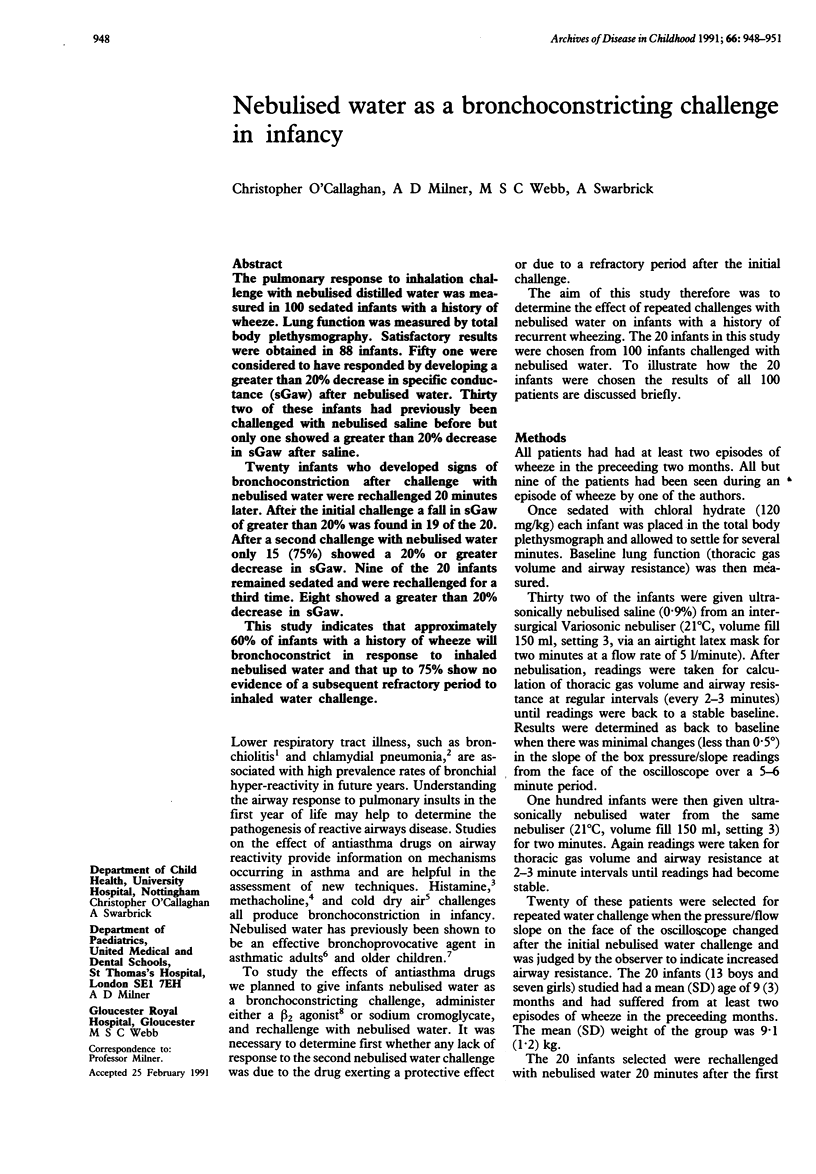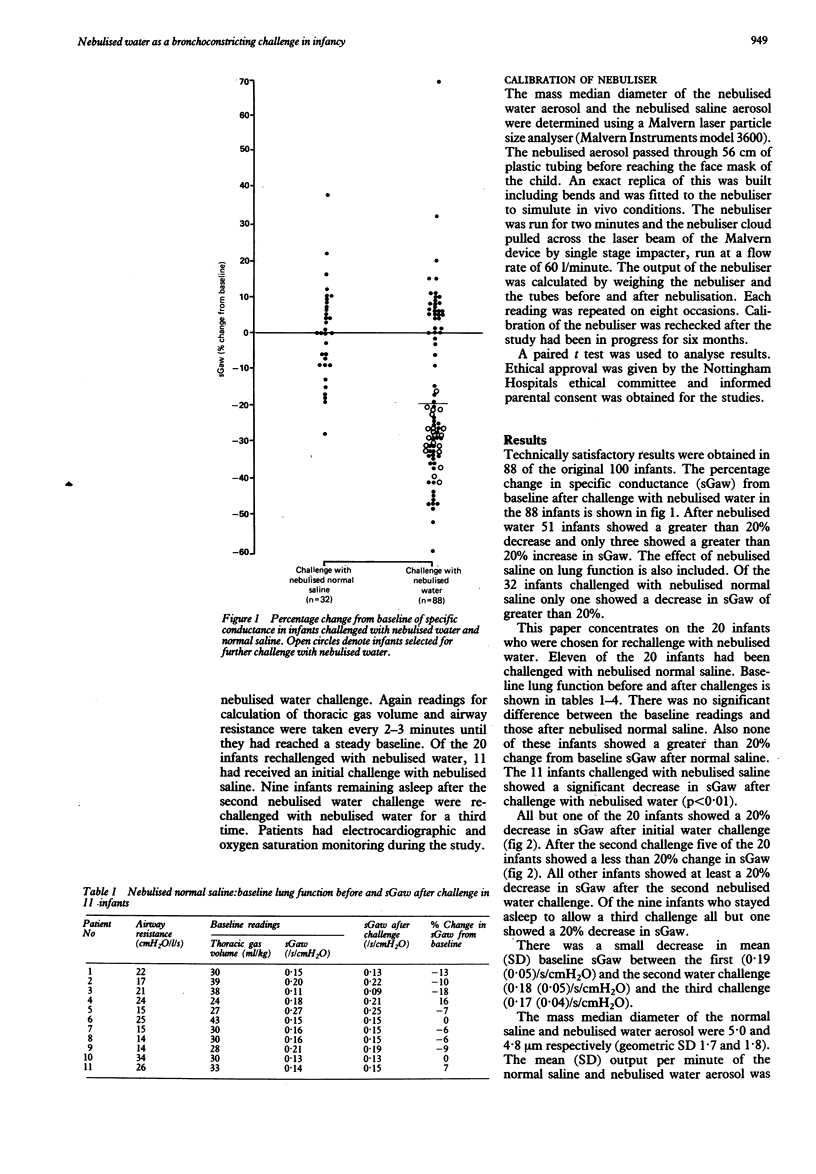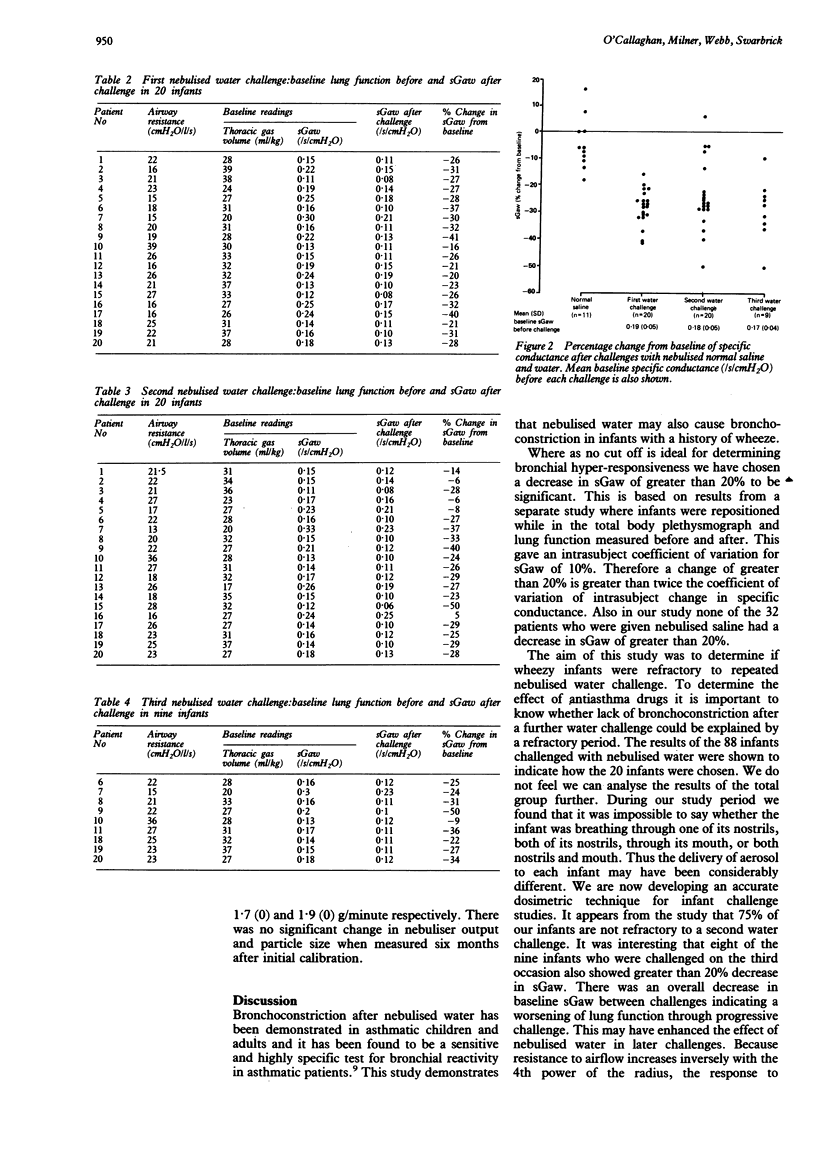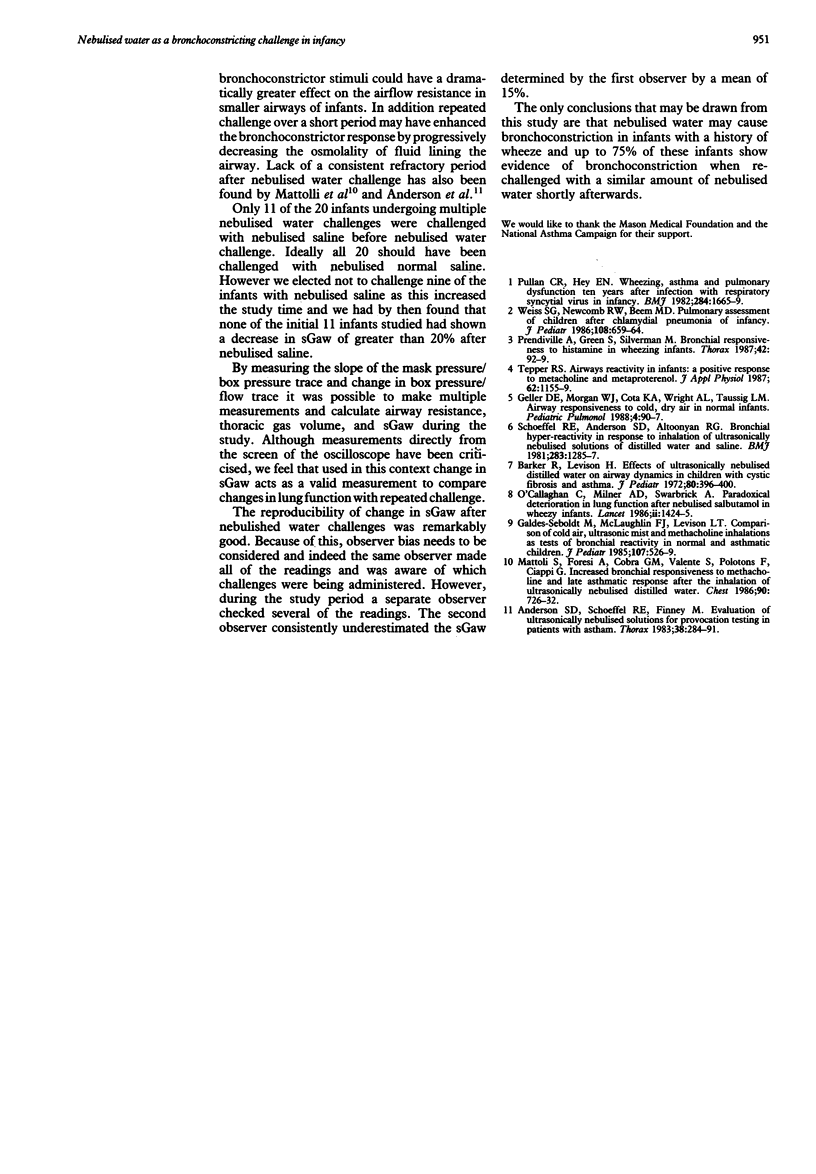Abstract
The pulmonary response to inhalation challenge with nebulised distilled water was measured in 100 sedated infants with a history of wheeze. Lung function was measured by total body plethysmography. Satisfactory results were obtained in 88 infants. Fifty one were considered to have responded by developing a greater than 20% decrease in specific conductance (sGaw) after nebulised water. Thirty two of these infants had previously been challenged with nebulised saline before but only one showed a greater than 20% decrease in sGaw after saline. Twenty infants who developed signs of bronchoconstriction after challenge with nebulised water were rechallenged 20 minutes later. After the initial challenge a fall in sGaw of greater than 20% was found in 19 of the 20. After a second challenge with nebulised water only 15 (75%) showed a 20% or greater decrease in sGaw. Nine of the 20 infants remained sedated and were rechallenged for a third time. Eight showed a greater than 20% decrease in sGaw. This study indicates that approximately 60% of infants with a history of wheeze will bronchoconstrict in response to inhaled nebulised water and that up to 75% show no evidence of a subsequent refractory period to inhaled water challenge.
Full text
PDF



Selected References
These references are in PubMed. This may not be the complete list of references from this article.
- Anderson S. D., Schoeffel R. E., Finney M. Evaluation of ultrasonically nebulised solutions for provocation testing in patients with asthma. Thorax. 1983 Apr;38(4):284–291. doi: 10.1136/thx.38.4.284. [DOI] [PMC free article] [PubMed] [Google Scholar]
- Barker R., Levison H. Effects of ultrasonically nebulized distilled water on airway dynamics in children with cystic fibrosis and asthma. J Pediatr. 1972 Mar;80(3):396–400. doi: 10.1016/s0022-3476(72)80495-5. [DOI] [PubMed] [Google Scholar]
- Galdès-Sebaldt M., McLaughlin F. J., Levison H. Comparison of cold air, ultrasonic mist, and methacholine inhalations as tests of bronchial reactivity in normal and asthmatic children. J Pediatr. 1985 Oct;107(4):526–530. doi: 10.1016/s0022-3476(85)80009-3. [DOI] [PubMed] [Google Scholar]
- Geller D. E., Morgan W. J., Cota K. A., Wright A. L., Taussig L. M. Airway responsiveness to cold, dry air in normal infants. Pediatr Pulmonol. 1988;4(2):90–97. doi: 10.1002/ppul.1950040206. [DOI] [PubMed] [Google Scholar]
- Mattoli S., Foresi A., Corbo G. M., Valente S., Patalano F., Ciappi G. Increase in bronchial responsiveness to methacholine and late asthmatic response after the inhalation of ultrasonically nebulized distilled water. Chest. 1986 Nov;90(5):726–732. doi: 10.1378/chest.90.5.726. [DOI] [PubMed] [Google Scholar]
- O'Callaghan C., Milner A. D., Swarbrick A. Paradoxical deterioration in lung function after nebulised salbutamol in wheezy infants. Lancet. 1986 Dec 20;2(8521-22):1424–1425. doi: 10.1016/s0140-6736(86)92735-2. [DOI] [PubMed] [Google Scholar]
- Prendiville A., Green S., Silverman M. Bronchial responsiveness to histamine in wheezy infants. Thorax. 1987 Feb;42(2):92–99. doi: 10.1136/thx.42.2.92. [DOI] [PMC free article] [PubMed] [Google Scholar]
- Pullan C. R., Hey E. N. Wheezing, asthma, and pulmonary dysfunction 10 years after infection with respiratory syncytial virus in infancy. Br Med J (Clin Res Ed) 1982 Jun 5;284(6330):1665–1669. doi: 10.1136/bmj.284.6330.1665. [DOI] [PMC free article] [PubMed] [Google Scholar]
- Schoeffel R. E., Anderson S. D., Altounyan R. E. Bronchial hyperreactivity in response to inhalation of ultrasonically nebulised solutions of distilled water and saline. Br Med J (Clin Res Ed) 1981 Nov 14;283(6302):1285–1287. doi: 10.1136/bmj.283.6302.1285. [DOI] [PMC free article] [PubMed] [Google Scholar]
- Tepper R. S. Airway reactivity in infants: a positive response to methacholine and metaproterenol. J Appl Physiol (1985) 1987 Mar;62(3):1155–1159. doi: 10.1152/jappl.1987.62.3.1155. [DOI] [PubMed] [Google Scholar]
- Weiss S. G., Newcomb R. W., Beem M. O. Pulmonary assessment of children after chlamydial pneumonia of infancy. J Pediatr. 1986 May;108(5 Pt 1):659–664. doi: 10.1016/s0022-3476(86)81037-x. [DOI] [PubMed] [Google Scholar]


